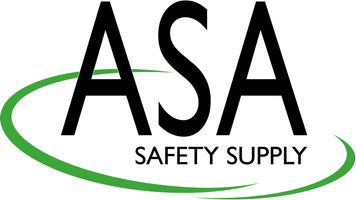Tight-fitting respirators must seal to the wearer’s face in order to provide expected protection. This includes disposable respirators (also called “filtering facepieces”). Therefore, fit testing is required in the US by the Occupational Safety and Health Administration (OSHA) before a user wears a mandatory respirator on the job, and must be assessed at least annually. In addition, fit tests should be performed:
- Whenever a different size, style, model or make of respirator is used.
- When any facial changes occur that could affect fit, such as significant weight fluctuation or dental work.
OSHA doesn’t require fit test administrators to be certified, just to know how to conduct a test, recognize invalid tests, and properly clean and maintain equipment. Read more about OSHA fit testing protocols.
There are two kinds of tests: qualitative and quantitative.
Qualitative Respirator Fit Testing
OSHA requires you to ensure that all of your employees who use tight-fitting respirators (including filtering face pieces like N95) be fit tested prior to initial use, whenever a different respirator facepiece (size, style, model or make) is used, and at least annually thereafter.
Qualitative fit tests (QLFT) rely on your response to test agents such as saccharin, bitrex, irritant smoke or banana oil. A QLFT, according to 29 CFR 1910.134(f)(6), must only be used to fit test negative pressure air-purifying respirators which are half mask respirators or below.
Although Qualitative fit tests are acceptable for half mask respirators we recommend using the more reliable Quantitative Fit Test Method

Quantitative Respirator Fit Testing
OSHA requires you to ensure that all of your employees who use tight-fitting respirators (including filtering face pieces like N95) be fit tested prior to initial use, whenever a different respirator facepiece (size, style, model or make) is used, and at least annually thereafter.
A quantitative fit test (QNFT) means "an assessment of the adequacy of respirator fit by numerically measuring the amount of leakage into the respirator."
A QNFT is necessary for respirators that must achieve a fit factor of greater than 100. This includes a full face respirator, or an atmosphere-supplying respirator. When possible, Safety Links recommends using a QNFT for all fit tests including fit tests for half mask respirators!
We have a selection of probed respirator adapters for most types, makes and models.
Although Qualitative fit tests are acceptable for half mask respirators we recommend using the more reliable Quantitative Fit Test Method

The Importance of Fit
Respirator fit is important because it involves several major issues:
- Seal.
- Compatibility.
- Stability.

The Respirator's Seal
A good fit means the respirator will seal to your skin. A respirator can only work when air passes through the filter. Air will take the path of least resistance, so if the seal isn’t there, the air will go around rather than through the respirator – and therefore lessen the protection.
User Seal Check: An Essential Everyday Test
- Employees wearing tight-fitting respiratory protection should perform a seal check each time they put on their respirator, and are required to do so by OSHA regulations unless the use is voluntary. A fit test ensures that the respirator is able to fit and provide a secure seal, but a user seal check ensures that it’s being worn right each time. Users can either perform a positive-pressure or negative-pressure seal check:
- A positive-pressure check means blocking the exhalation valve on a half or full facepiece respirator or covering the respirator surface on a filtering facepiece, usually by using your hands, and trying to breathe out. If slight pressure builds up, that means air isn’t leaking around the edges of the respirator.
- A negative-pressure check involves blocking the intake valves on a half or full facepiece respirator or covering the respirator surface on a filtering facepiece, typically using your hands and trying to breathe in. If no air enters, the seal is tight.See the product User Instructions for more details.
Compatibility with other PPE
Safety glasses, hearing protection, face shields, hard hats and coveralls can all vie with a respirator for real estate on a person’s face, head or body. For instance, if a half face respirator doesn’t fit well (especially if it’s too large), it can overlap with glasses. The more that happens, the more fogging can potentially occur on glasses, and the more likely it is that they’ll interfere with the respirator’s seal.
To catch these problems before they happen on the job, OSHA requires any PPE that could interfere with the respirator’s seal to be worn during the fit test.
Respirator Stability
The better a respirator fits, the more stable it’s likely to be on the wearer’s face. Fit testing determines the respirator’s ability to retain its seal when the worker is in motion. That’s why test subjects are told to go through several exercises as part of testing. A respirator that shifts during movement may not be able to retain its seal.
